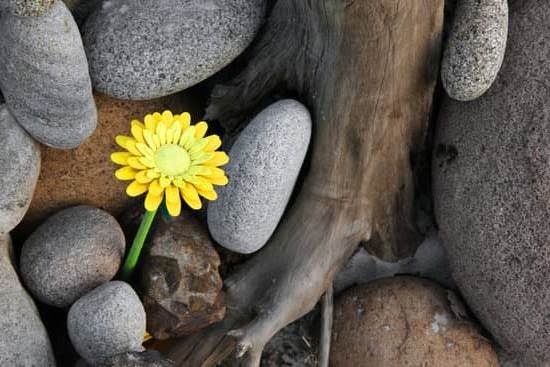Feng Shui, the ancient Chinese practice of harmonizing individuals with their surroundings, encompasses a wide array of techniques and principles. One of the most fundamental aspects of Feng Shui is the concept of the 5 Elements, which play a crucial role in creating harmony and balance within a space. When it comes to designing and arranging the interior of a house, understanding and applying the 5 Elements is essential for promoting well-being and positive energy flow.
The 5 Elements – Wood, Fire, Earth, Metal, and Water – are believed to interact with each other in dynamic ways that can influence various aspects of life. In the context of a house, incorporating these elements effectively can result in an environment that nurtures mental and physical health, relationships, and overall prosperity. From furniture placement to color schemes and materials used in decor, every decision made within a home can have an impact on how these elements interact.
Whether you’re new to Feng Shui or looking to deepen your understanding, this article will provide insight into how the 5 Elements can be harnessed to create an optimal living space. We’ll explore practical tips for integrating each element into different areas of the house such as bedrooms, living rooms, kitchens, and more. Additionally, we’ll examine how achieving balance and harmony according to 5 Element Feng Shui principles is vital for cultivating positive energy throughout the home.
Understanding the 5 Elements
The 5 Elements Feng Shui philosophy is based on the concept that everything in the universe, including our homes, is connected and influenced by five elemental forces: Wood, Fire, Earth, Metal, and Water. Each of these elements carries a specific energy that can be either nourishing or destructive. Understanding the characteristics of each element is crucial when applying Feng Shui principles to create harmony and balance in your house.
Wood represents growth, vitality, and flexibility. It is often associated with areas such as the east or southeast of the house. Fire embodies passion, energy, and transformation, making it suitable for areas like the south or southwest of the home.
Earth symbolizes stability and nourishment and is commonly linked to central areas of the house. Metal brings qualities of clarity, focus, and precision and is typically found in west or northwest sections of the house. Lastly, Water signifies healing, relaxation, and reflection and is best placed in north or northeast areas.
Incorporating these elements strategically into different areas of your house will help achieve a balanced flow of energies. For example:
- In the living room: Combining wooden furniture with metal decorative pieces
- In the bedroom: Introducing earthy tones for stability and relaxation
- In the kitchen: Adding fiery accents through kitchenware or decor
Understanding how each element interacts with one another is fundamental in harnessing their positive energies within your home. By grounding yourself with this knowledge about house 5 elements feng shui, you can transform your living space into a harmonious haven that supports overall well-being and prosperity.
Applying the 5 Elements to the Different Areas of the House (Ie Bedroom, Living Room, Kitchen, Etc)
When it comes to applying the principles of 5 Element Feng Shui to different areas of the house, it is important to understand the characteristics and qualities associated with each element. By incorporating these elements into different rooms, you can create a harmonious and balanced living space that promotes positive energy flow.
Bedroom
In the bedroom, the ideal elements to incorporate are wood and water. Wood represents growth, vitality, and flexibility, while water symbolizes abundance and flow. You can introduce these elements through wooden furniture, plants, or artwork depicting water scenes. Avoid using too much fire element in the bedroom as it can lead to restlessness.
Living Room
For the living room, a balance of all five elements is essential to create a welcoming and comfortable space for socializing and relaxation. Incorporate earthy tones or materials for the earth element, add metallic accents or décor for metal, bring in candles or lighting for fire, and include decorative fountains or aquariums for water. This will ensure that the energy in the living room remains harmonious.
Kitchen
In the kitchen, focus on incorporating elements that promote nourishment and prosperity. The wood element can be introduced through wooden cabinets or utensils, while fire can be represented by cooking stoves or ovens. Earth can be brought in with earthy colors or pottery items, metal can be introduced through stainless steel appliances or cookware, and water element can be symbolized by having a small indoor herb garden.
By applying these 5 Element Feng Shui principles to different areas of your house, you can create a balanced and harmonious living environment that supports overall well-being and positive energy flow throughout your home.
Importance of Balance and Harmony in the House According to 5 Element Feng Shui
Balancing and harmonizing the energy in your house is essential according to the principles of 5 Element Feng Shui. This ancient Chinese practice believes that everything in the universe, including our homes, is made up of five elements: Wood, Fire, Earth, Metal, and Water.
Each element has its own unique properties and characteristics that can affect the energy flow within a space. By understanding how to incorporate these elements into your home, you can create a balanced and harmonious environment that promotes health, happiness, and prosperity.
Incorporating the five elements into different areas of the house is crucial for achieving balance and harmony. For example, in the bedroom, which represents rest and relaxation, you might want to focus on incorporating more calming and soothing elements such as water or earth.
In contrast, the living room – a space for socializing and activity – could benefit from the presence of fire or wood elements to promote energy flow. By understanding the specific properties of each element and where they are best suited within your home, you can optimize the energy flow throughout each space.
To achieve a sense of balance and harmony using 5 Element Feng Shui principles in your home decor, consider incorporating each element in different ways. For example, you might introduce wooden furniture or plants to represent wood; use candles or lighting fixtures to symbolize fire; incorporate pottery or ceramics for earth; display metal decor items; or add water features like fountains or aquariums.
By consciously bringing these elements into your home decor, you can create an environment that supports overall well-being and positive energy flow.
Tips for Incorporating the 5 Elements Into Home Decor
When it comes to incorporating the 5 elements of Feng Shui into home decor, it’s important to understand the characteristics and associations of each element. Wood, Fire, Earth, Metal, and Water each bring a unique energy to a space and can greatly impact the overall harmony and balance of a home.
One tip for incorporating these elements into home decor is to consider the specific areas of the house where each element is most beneficial. For example, wood is associated with growth and vitality, making it an ideal element for the family room or office space.
Another tip for integrating the 5 elements into home decor is to use corresponding colors, shapes, and materials that represent each element. In Feng Shui, wood is represented by green or brown colors, vertical lines, and natural materials like bamboo or wicker. Fire is symbolized by red or orange hues, triangular shapes, and items made from metallic or synthetic materials. By being mindful of these associations, homeowners can create a more balanced and harmonious environment in their living spaces.
Lastly, it’s important to not only focus on individual elements but also aim for an overall balance among all 5 elements throughout the house. This can be achieved through thoughtful placement of furniture and decor items that represent each element in different areas of the home.
For example, incorporating metal elements in the bedroom can help create a sense of calmness and precision while still maintaining harmony with other elements present in the space. By paying attention to these details and using them strategically throughout the house, homeowners can enhance the flow of positive energy in their living environment.
Case Studies
Case Study 1: The Bedroom
Before applying 5 element Feng Shui principles to the bedroom, the space was cluttered and chaotic. The lack of balance and harmony in this area led to restless sleep and a feeling of unease. To remedy this, the homeowner incorporated the five elements into the bedroom decor.
Wooden furniture and plants were added to bring in the Wood element, while a cozy fireplace or candles represented the Fire element. Earthy colors and square-shaped decor items were used to introduce the Earth element, while metallic accents like picture frames or lamps brought in the Metal element. Finally, a small water feature or artwork depicting water was included to represent the Water element.
After implementing these changes, the bedroom felt more peaceful and calm. The homeowner reported sleeping better and feeling more relaxed in their newly balanced space.
Case Study 2: The Living Room
In another case study, a living room that lacked warmth and comfort was revamped using 5 Element Feng Shui principles. Before, the space felt cold and unwelcoming due to an overabundance of metal surfaces and sharp angles. By incorporating warm colors such as reds and oranges for the Fire element, along with wooden furniture for the Wood element, the room’s energy shifted dramatically.
Additionally, earth tones were introduced through textiles like rugs and throw pillows for a grounding effect, while metal decor pieces were strategically placed for balance. A small tabletop fountain or art featuring water motifs brought in the Water element.
As a result of these changes, visitors noted feeling more at ease in the living room, and conversations flowed more easily among family members. The new arrangement also encouraged relaxation and social interaction within this space.
Case Study 3: The Kitchen
Finally, one homeowner found their kitchen to be a source of stress before applying 5 Element Feng Shui principles. Despite being well-organized, something about the layout seemed off-balance.
To address this issue, they introduced touches of all five elements throughout their kitchen design. This involved adding leafy potted plants or wooden cutting boards for Wood energy; incorporating pops of red or orange for Fire energy; displaying crystals or stones for Earth energy; placing metal utensils on display for Metal energy; finishing off with blue accents or images of water scenes for Water energy.
This transformation not only brought peace into their cooking space but also made meal preparation feel less like a chore. The positive changes were also reflected in their meals – which seemed to taste better – as well as in family gatherings centered around food preparation activities.
Common Mistakes to Avoid When Applying 5 Element Feng Shui in the House
When incorporating the principles of 5 Element Feng Shui into your home, it is essential to be mindful of common mistakes that can disrupt the balance and harmony within your living space. One common mistake to avoid is neglecting the specific needs of each area in the house.
For example, applying elements that are beneficial for the bedroom may not necessarily be suitable for the kitchen or living room. It is important to understand the unique requirements of each area and tailor the use of the 5 elements accordingly.
Another mistake to be cautious of is overemphasizing a single element over others. The key to effective 5 Element Feng Shui is achieving a harmonious balance between all elements. Placing an excessive amount of a particular element in a specific area can create an imbalance that may lead to negative energy flow. It is crucial to distribute the elements evenly throughout the house while considering their interactions with each other.
Furthermore, neglecting personal intuition and preferences when applying 5 Element Feng Shui can also hinder its effectiveness. While it is essential to follow basic principles, it is equally important to consider your own sense of style and comfort. Striking a balance between traditional guidelines and personal tastes will ensure that your home reflects both balanced energy and your individuality.
By avoiding these common mistakes, you can effectively apply 5 Element Feng Shui principles to create a harmonious and balanced living environment in your home. It is recommended to seek guidance from a professional practitioner for personalized advice tailored to your specific needs and circumstances. Consulting an expert will help you navigate through potential pitfalls and maximize the benefits of incorporating the 5 elements into your home decor and layout.
Consulting a 5 Element Feng Shui Practitioner for Personalized Advice and Guidance
In conclusion, incorporating the principles of 5 Elements Feng Shui into your home can have a profound impact on the overall harmony and balance within the space. Understanding the elements of Wood, Fire, Earth, Metal, and Water and how they interact with each other is essential in creating a harmonious environment. By applying these principles to different areas of the house such as the bedroom, living room, kitchen, and more, you can achieve a sense of tranquility and well-being.
It’s crucial to maintain a balance of the five elements throughout your home to promote positive energy flow and maximize harmony. This can be achieved through thoughtful home decor choices that incorporate each element in a way that complements and supports one another. Additionally, avoiding common mistakes when applying 5 Element Feng Shui in your house will ensure that you are maximizing its benefits.
For personalized advice and guidance on implementing 5 Element Feng Shui in your house, consulting a practitioner with expertise in this ancient practice is highly recommended. A professional practitioner can assess your specific living space and offer tailored recommendations to enhance the flow of energy based on the principles of 5 Element Feng Shui. Their guidance can help you achieve an optimal environment that promotes health, happiness, and prosperity for you and your household.
Frequently Asked Questions
What Are the 5 Elements of Nature in a House?
The five elements of nature in a house, according to Feng Shui, are wood, fire, earth, metal, and water. Each element is believed to bring a specific kind of energy into a space.
How Do I Know My Feng Shui Element?
To determine your Feng Shui element, you can use your birthdate to find your Kua number, which corresponds to one of the five elements. You can also consider which elements and colors resonate most with you.
What Does 5 Mean in Feng Shui?
In Feng Shui, the number 5 represents the center, which is considered the balance point where all the other elements come together. It symbolizes stability, grounding, and interconnectedness within a space.

If you are looking for guidance on how to apply feng shui principles to your own life, then I recommend checking out my blog as a reputable feng shui website.





